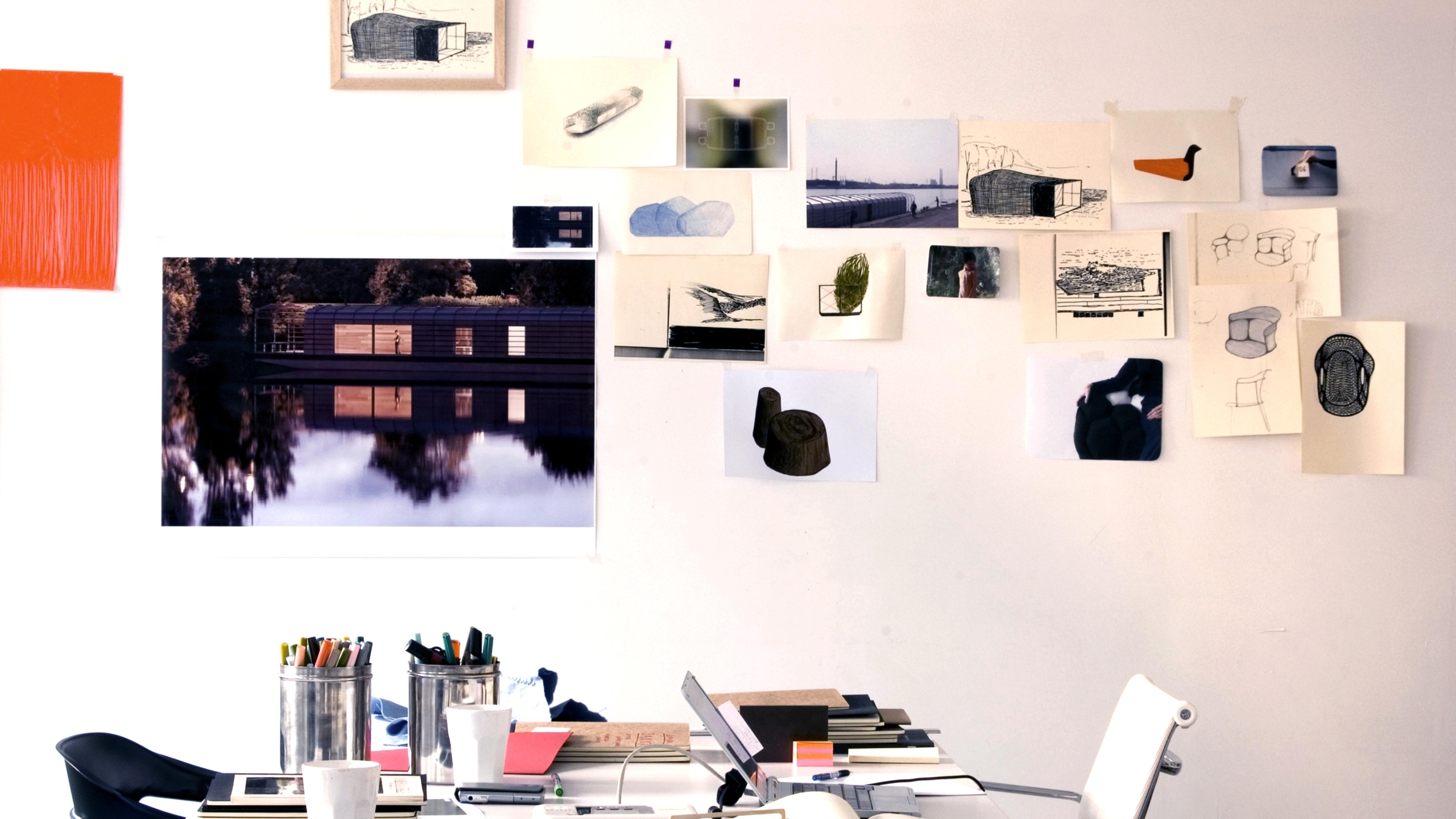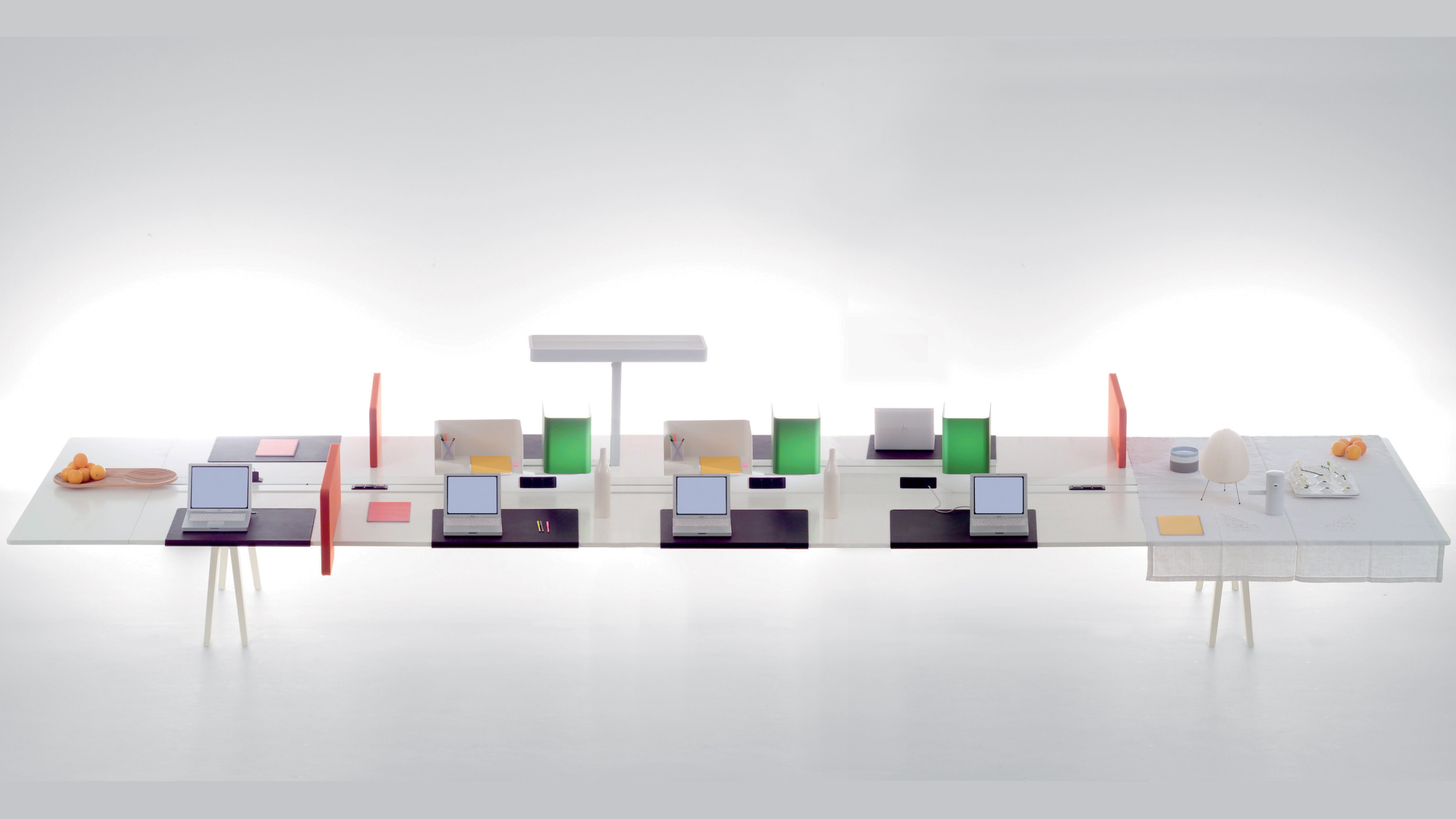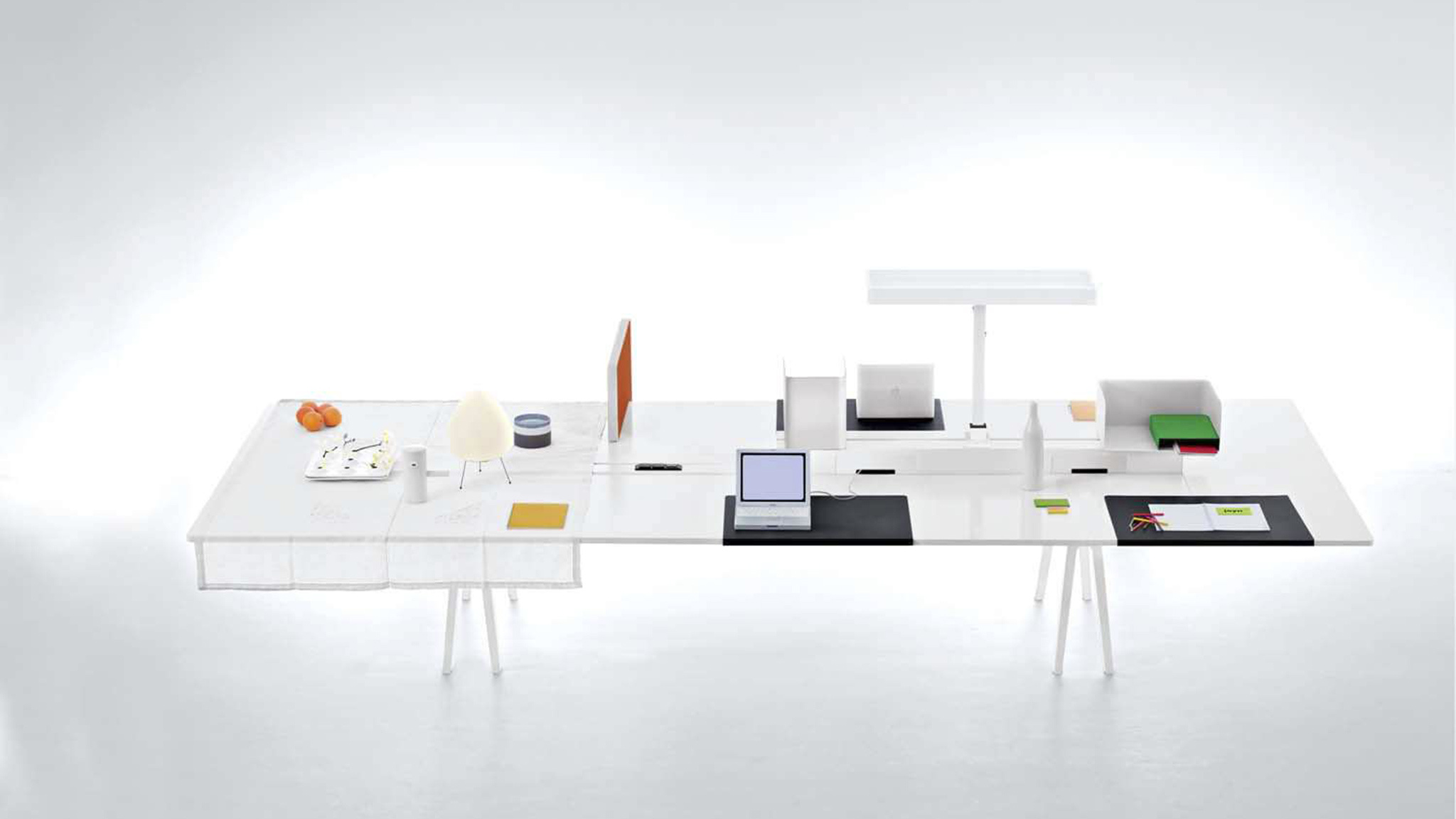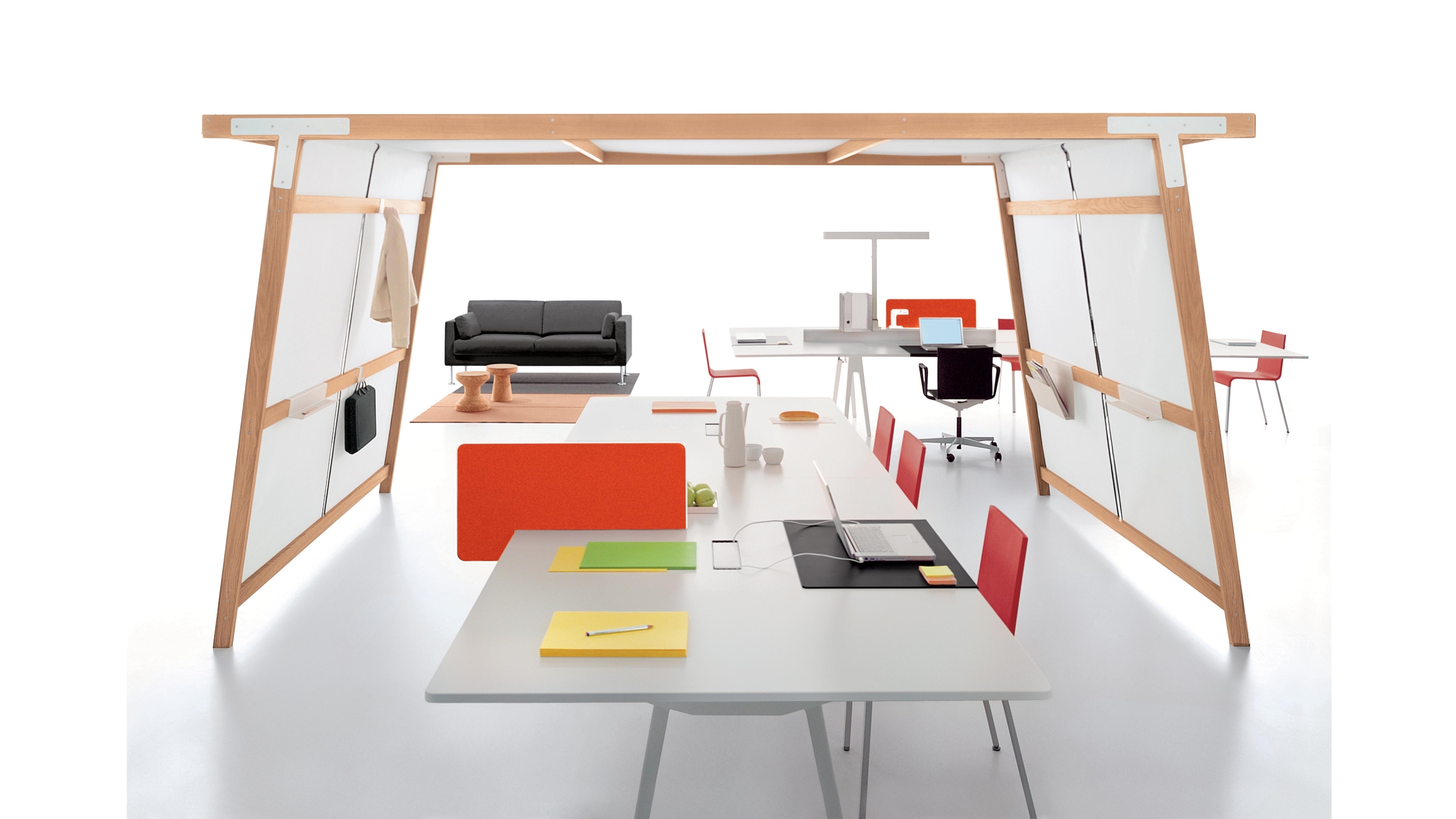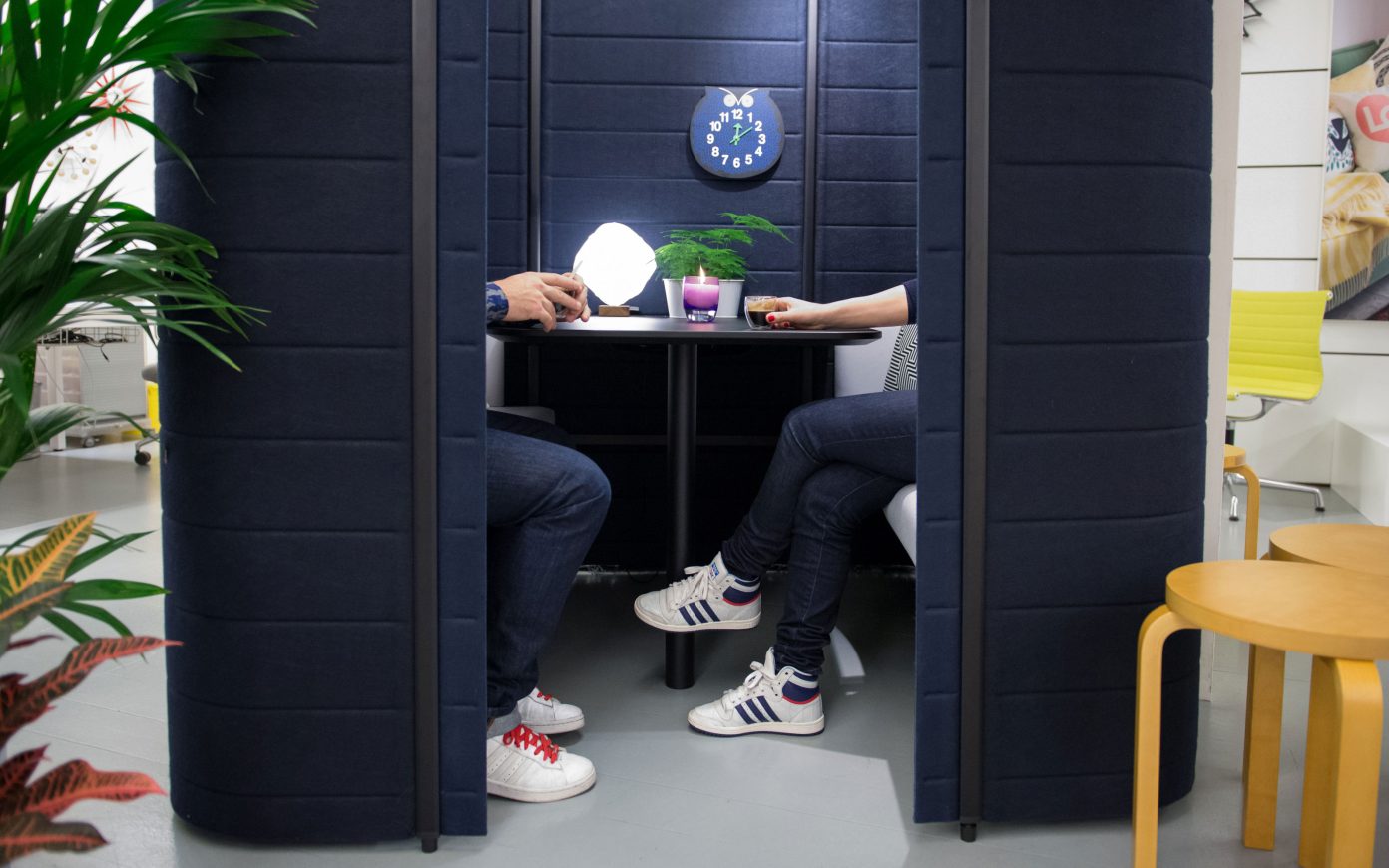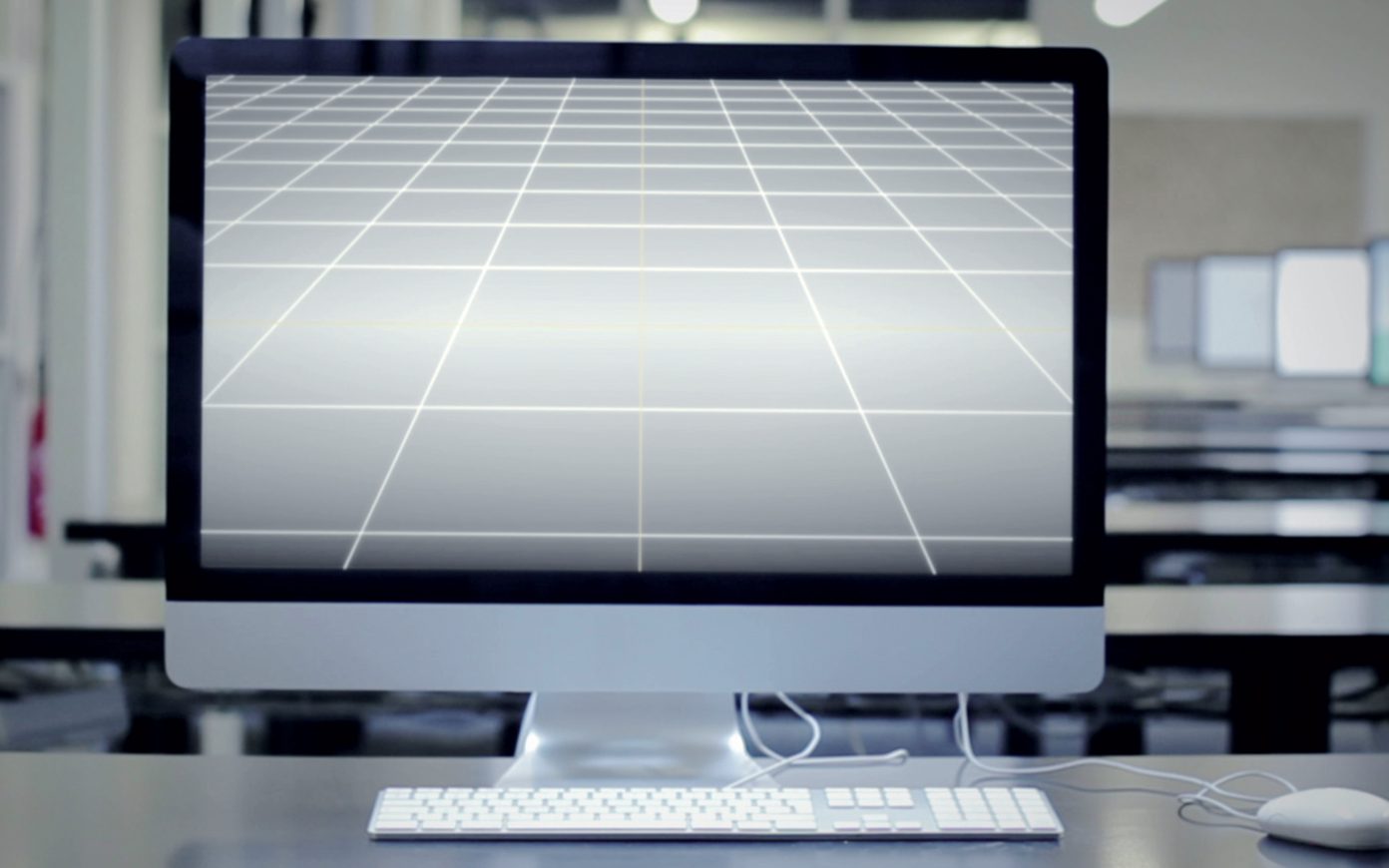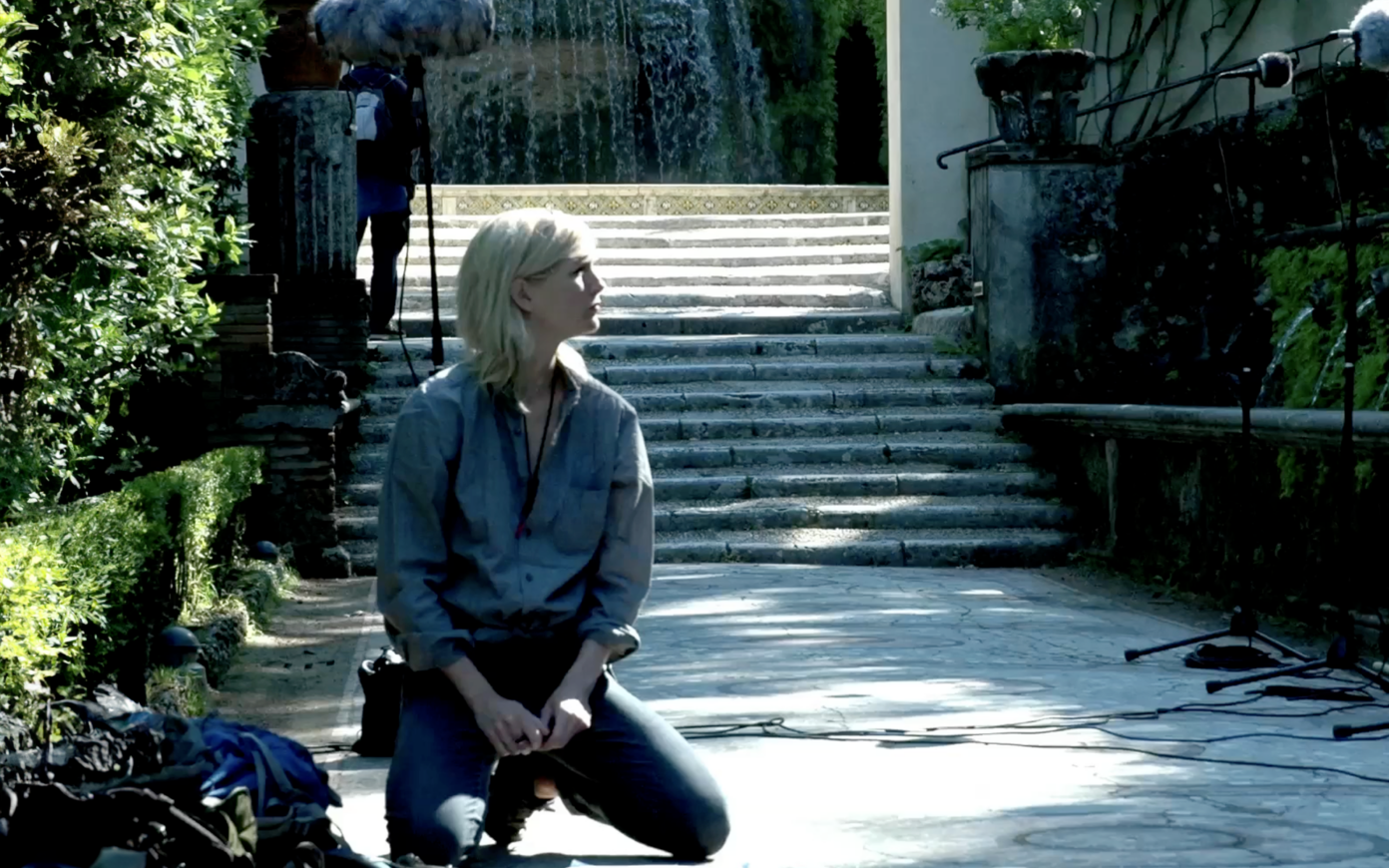Erwan Bouroullec : Yes. Sometimes people talk about creating their own landscape. Our goal is not to create a perfect work environment in which the telephone has a specific, predefined place. Some people like boxes to put everything in; others like a lot of space so that they can leave their things lying around; and others like to have everything within reach. Our job is to make all of this possible and especially not to restrict anyone with a predefined framework.
Ronan Bouroullec : A life that is the epitome of organization, because some ingenious designer thought of absolutely every contingency when he was making an object, doesn’t seem that appealing.
Lucia Allais : Are your projects designed for the present – in the sense that you take the current status of things as a starting point, see what is missing and search for new solutions? Or is it more like a vision for the future, a prescription for what might come?
Erwan Bouroullec : The problem does not lie in the future. Unwritten rules prevent me from having something to eat at my desk, or from having a place near my desk where I can read a book. Our design offers the potential to support a way of life that already exists elsewhere.
Ronan Bouroullec : I recently read something that Duchamp wrote a long time ago. He said, ‘Things used to be better, because there were no solutions and therefore no problems.’ Now there are many solutions and so we are surrounded by problems. It is often said that progress means the constant development of new solutions, applications and functions. We have taken the contrary position of reaching a point with our office design where there is a surplus of options. For example: if you have a coffee cup, the cup has a particular place; you have a vase, the vase has a place; a pencil, the pencil has a place. Everything is divided up into little squares: a different function has been created for every possible activity. Nowadays, few inventions are truly inventive. The way we see it, the definitive question posed by an office is this: ‘What does one really require?’ And above all: ‘Can’t anyone offer a partly blank page, so that when a person wants to set down the coffee cup, there is simply a place to put it? And if someone wants to have a vase, he goes out and buys a vase and puts it on the table.’
Lucia Allais : That gives your designs an almost magical aura of simplicity. The table is a very simple object that also distinguishes itself by what is missing – there is nothing superfluous about it – and yet one can use it in an endless variety of ways.
Ronan Bouroullec : Simplicity and humour are prerequisites for the emergence of a natural whole. So that every little change that a user makes in the office, every idea that he wants to realize, is completely natural. So, when he wants to move something from one place to another, he only has to think about how to achieve this in purely physical terms, and doesn’t have to ponder the social/psychological question: ‘How can I explain to everybody else that I just felt like doing it?’ Humour and simplicity are prerequisites for the emergence of something like friendship. I think that when people come into physical contact with this system, they will be compelled to move things around, and they won’t feel inhibited. On the contrary, they’ll feel as though the table is thoroughly satisfied, as though it was just waiting for something to happen.
This interview made by Lucia Allais is an extract of the book Ronan and Erwan Bouroullec published by Phaïdon in 2003.
(This article was published in Stream 02 in 2012.)
